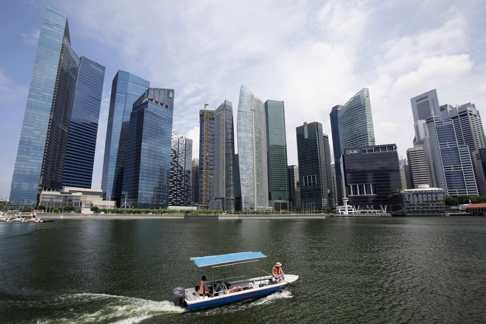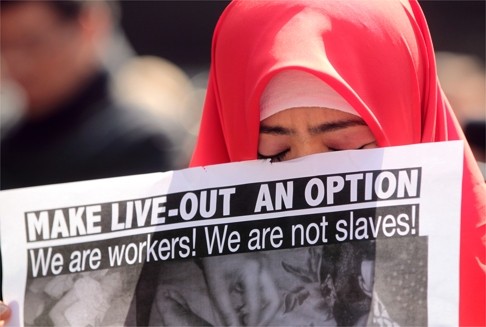
Sea change in attitudes needed if Hong Kong is to revive maritime Silk Road
Philip Bowring says ‘One Belt, One Road’ should rekindle our seaborne trade links with Southeast Asia, India and beyond, not landlocked states with which we have no history. But, first, we will need to adjust our treatment of people from those places
The 44 mentions of “One Belt, One Road” in the chief executive’s policy address made it into a meaningless mantra, like a slogan culled from Mao’s Little Red Book. But Beijing’s prompting at least made Leung Chun-ying mention the issue which he has long ignored – Hong Kong’s international trading role, particularly its relations with Asian neighbours – rather than endlessly talking about opportunities on the mainland.
READ MORE: Hong Kong education secretary defends HK$1b scholarship fund for One Belt, One Road students
It does raise a little problem for the bureaucracy. Having promised a billion dollars to support students from countries along “One Belt, One Road” it must now figure out how many states are included. One count has no less than 69 countries, by including almost every state where China is building or proposing roads, railways, ports or pipelines. Hong Kong would do well to focus on those with which it has natural and historical links – which do not include the landlocked “stans” of Central Asia.
Hong Kong, Guangzhou, Quanzhou and Xiamen have always been the hubs of China’s maritime trade
Hong Kong, Guangzhou, Quanzhou (泉州) and Xiamen (廈門) have always been the hubs of China’s maritime trade. Indeed, for at least the past 1,500 years, it is likely that far more goods were moved on this maritime “silk road” than on the better known overland route, the China trade being carried on by Indonesians, Indians and Arabs in the centuries before Chinese themselves sailed the route from Guangzhou to the Strait of Malacca, to southern India and beyond, or south to trade silks and ceramics for spices and tropical forest products. In Tang times, Guangzhou had an Arab and Persian population estimated at 100,000.

READ MORE: Hong Kong leader reveals details of the city’s game plan for One Belt, One Road strategy
So let Hong Kong not adopt a scattergun approach to “One Belt, One Road” and hand out funds for Belarus and Azerbaijan just because they are on some list. It should focus on developing links with Southeast Asia, which used to be much closer than they are now, with southern India, Iran, the Gulf and the east African coast.
Let Hong Kong not adopt a scattergun approach ... and hand out funds for Belarus and Azerbaijan just because they are on some list
There is a lesson to be learned from Singapore, which has consciously sought to attract IT and other high-level professional talent from India – not difficult given the relatively high salaries and ordered society that Hong Kong, like Singapore, can offer.
Yet does this require a change of attitudes on the part of a population which does not have the same multicultural history as Singapore? The injustices meted out to Hong Kong’s Asian minorities are a stark rebuke to its claims to be Asia’s world city. The deliberate, chronic failure of officialdom to implement laws to protect domestic helpers reveals a racism which is not only shocking but is a barrier to Hong Kong playing a larger role in Asian commerce.

READ MORE: Hong Kong can be a profitable middleman along China’s ‘One Belt, One Road’
Of course, that is not so surprising given the stature that, in the past, the Chinese state awarded itself in world affairs, assuming that people beyond its borders needed, to one degree or another, to be civilised. Today, this contempt still lingers, not just towards countries in Southeast Asia where, often thanks to Western colonialism, Chinese became dominant in commerce, but towards South Asian peoples from whom China borrowed much. It even extends to scientifically preposterous claims to genetic separatism and superiority.
The universities are obsessed with China and the West, with almost nothing in between
Hong Kong could and should be leading China towards a more equal and internationalist involvement with its non-Confucian Asian neighbours. But it is singularly failing to try, not merely in terms of its treatment of people but at an academic level, too. Neither the University of Hong Kong, nor the Chinese University, nor the Polytechnic University has any South or Southeast Asian language, history or cultural studies, let alone Arabic, Persian or Turkish. Alone among local universities, City University has a small Southeast Asian research centre, but no related language teaching. Generally, the universities are obsessed with China and the West, with almost nothing in between.
So now they are all talking about climbing on the belt and road bandwagon, it is not at all clear how they will go about it or whether handing out a few scholarships will create any synergy. Chances are that Hong Kong’s belt and road journey will not get much farther west than Xian.
Philip Bowring is a Hong Kong-based journalist and commentator

